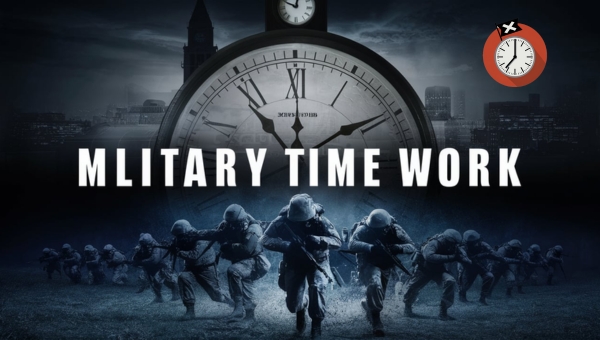Military Phonetic Alphabet [From Alpha to Zulu Explained]
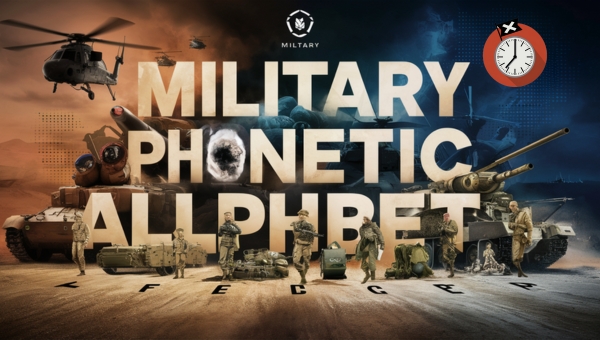
The Military Phonetic Alphabet is indispensable for clear, accurate communication. In this article, you’ll delve into its history, global usage, and detailed A-Z list. We’ll also discuss how to use it effectively in critical situations, spell names or locations, and avoid common mistakes.
By the end, you’ll understand its significant benefits—from enhanced communication skills to professional advantages. Let’s dive in and unlock the full potential of the Military Phonetic Alphabet!
An In-Depth Look at the Military Phonetic Alphabet?
The Military Phonetic Alphabet is an essential tool for clear and effective communication in various high-stakes fields. This alphabet assigns code words to each letter from A to Z, ensuring that messages are understood correctly regardless of background noise or language barriers.
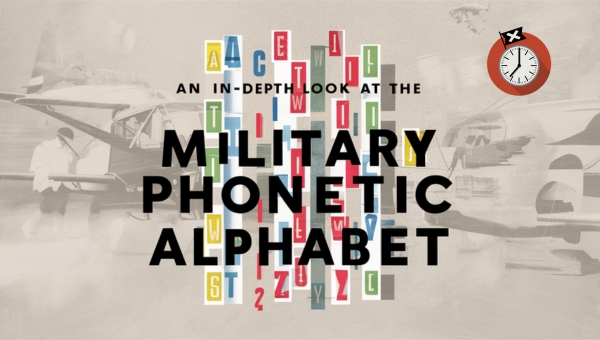
If you’ve ever heard “Alpha,” “Bravo,” or “Charlie” on TV or in movies, you’ve already encountered it. But how did this system come about? And how is it used globally today? Let’s delve deeper.
History and Development
The origins of the Military Phonetic Alphabet can be traced back to the early 20th century. Initially developed for aviation, it was designed to overcome the challenges of radio communication. Early versions were used during World War I, but it was during World War II that a standardized version began to take shape.
The International Civil Aviation Organization (ICAO) eventually refined and adopted the current version in the 1950s. This standardization ensured that pilots and air traffic controllers worldwide could communicate effectively, regardless of their native language.
Global Usage
The Military Phonetic Alphabet has been adopted globally and is used in various fields beyond the military.
Its applications include:
- Aviation: Pilots and air traffic controllers use it to spell out critical information.
- Military: Used for clear communication during operations and training.
- Emergency Services: Police, firefighters, and medical personnel use it to convey information precisely.
- Telecommunications: Customer service representatives often use it to avoid misunderstandings.
- Maritime: Ships at sea use it for radio communication to ensure clarity.
This widespread adoption underscores the importance of the Military Phonetic Alphabet in ensuring accurate and reliable communication across diverse and critical fields.
Military Phonetic Alphabet from A to Z
Navigating the world of communication, especially in high-pressure environments, requires a reliable system to avoid misunderstandings. The Military Phonetic Alphabet offers a time-tested solution. Let’s dive into its components and significance.
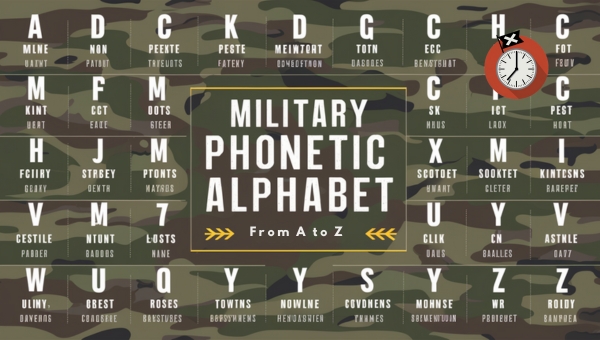
The Complete Alphabet
The Military Phonetic Alphabet assigns specific words to each letter of the English alphabet to ensure clarity.
Here’s the complete list:
- A – Alpha (AL-fah)
- B – Bravo (BRAH-voh)
- C – Charlie (CHAR-lee)
- D – Delta (DELL-tah)
- E – Echo (ECK-oh)
- F – Foxtrot (FOKS-trot)
- G – Golf (GOLF)
- H – Hotel (hoh-TEL)
- I – India (IN-dee-ah)
- J – Juliett (JEW-lee-ETT)
- K – Kilo (KEY-loh)
- L – Lima (LEE-mah)
- M – Mike (MIKE)
- N – November (no-VEM-ber)
- O – Oscar (OSS-cah)
- P – Papa (pah-PAH)
- Q – Quebec (keh-BECK)
- R – Romeo (ROW-me-oh)
- S – Sierra (see-AIR-rah)
- T – Tango (TANG-go)
- U – Uniform (YOU-nee-form)
- V – Victor (VIK-tah)
- W – Whiskey (WISS-key)
- X – X-ray (ECKS-ray)
- Y – Yankee (YANG-kee)
- Z – Zulu (ZOO-loo)
This list provides clear pronunciation for each word, minimizing the risk of miscommunication.
Importance of Standardization
Standardizing the Military Phonetic Alphabet is critical for several reasons:
- Consistency: Ensures everyone uses the same terms, reducing confusion.
- Clarity: Prevents misunderstandings, especially when signal quality is poor.
- Safety: Vital in emergency and high-stress situations where every second counts.
By adhering to this standard, professionals can communicate more effectively, leading to better outcomes.
Real-Life Examples
The Military Phonetic Alphabet is widely used in various fields. Here are some examples:
- Military Operations: Soldiers use it to convey coordinates and commands accurately.
- Air Traffic Control: Pilots and controllers communicate flight details clearly.
- Emergency Services: Police, firefighters, and paramedics use it to spell out critical information.
These examples highlight the practical applications and importance of this communication tool.
How to Use the Military Phonetic Alphabet?
The Military Phonetic Alphabet is a powerful tool for clear communication, especially in high-pressure situations where misunderstandings can have serious consequences.
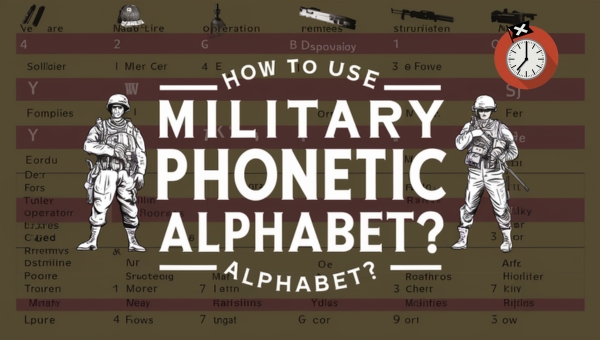
Whether you’re in the military, aviation, or emergency services, knowing how to use this alphabet can significantly enhance your communication skills. Let’s dive into how you can effectively utilize the Military Phonetic Alphabet in different scenarios.
Communication in Critical Situations
In critical situations, clear communication is paramount. The Military Phonetic Alphabet ensures that essential information is conveyed without error.
Here’s how it’s used:
- Emergency Services: First responders use the phonetic alphabet to communicate quickly and accurately.
- Military Operations: Soldiers rely on this alphabet to relay coordinates and commands.
- Aviation: Pilots and air traffic controllers use it to avoid misunderstandings during flights.
By using the phonetic alphabet, you can make sure that your message is understood, even in noisy or stressful environments.
Phonetic Spelling for Names and Locations
When spelling names, locations, or codes, the Military Phonetic Alphabet can be incredibly helpful. Here’s how to use it:
- Names: For example, if you’re spelling “John,” you would say “Juliet, Oscar, Hotel, November.”
- Locations: To spell “Paris,” you would say “Papa, Alpha, Romeo, India, Sierra.”
- Codes: For a code like “B2E,” you would say “Bravo, Two, Echo.”
Using the phonetic alphabet in this way ensures that there is no confusion, particularly when dealing with similar-sounding letters.
Common Mistakes to Avoid
While the Military Phonetic Alphabet is straightforward, there are common mistakes people often make. Here are a few to watch out for:
- Incorrect Words: Using words that are not part of the official alphabet can cause confusion.
- Mispronunciation: Ensure you pronounce each word correctly to avoid misunderstandings.
- Skipping Letters: Don’t skip letters, even if they seem obvious. Each one is crucial for clarity.
By being aware of these common pitfalls, you can use the Military Phonetic Alphabet more effectively and confidently.
Benefits of Learning the Military Phonetic Alphabet
Learning the Military Phonetic Alphabet offers several advantages that can enhance personal and professional communication. It can be a valuable skill in various situations, from everyday conversations to emergency scenarios. Let’s explore some of the key benefits.
Enhanced Communication Skills
Learning the Military Phonetic Alphabet can significantly improve your verbal communication skills. Here are some ways it helps:
- Clarity: It helps in spelling out words clearly, reducing the chances of miscommunication.
- Efficiency: Speeds up the process of conveying information accurately in noisy environments.
- Universal Understanding: This creates a common ground for people from different backgrounds to understand each other easily.
Precision in Emergency Situations
The Military Phonetic Alphabet is essential for precise communication during emergencies. It ensures that critical information is conveyed accurately, which is crucial in high-stakes environments such as:
- Healthcare: Doctors and nurses can use it to spell out medical terms and medications clearly.
- Law Enforcement: Officers can communicate locations and codes without ambiguity.
- Rescue Operations: Rescue teams can coordinate efforts effectively, ensuring everyone’s safety.
Professional Advantages
Knowledge of the Military Phonetic Alphabet can be a significant asset in various professional fields. It provides several advantages, including:
- Aviation: Pilots and air traffic controllers use it to avoid misunderstandings.
- Military: Essential for clear communication during operations and training.
- Law Enforcement: Helps in reporting incidents and coordinating responses.
- Telecommunications: Ensures that technical information is shared without errors.
Conclusion
The Military Phonetic Alphabet is a vital tool for clear and precise communication in various high-stakes fields. From its historical roots in aviation and military operations to its widespread global use, this alphabet ensures that messages are conveyed accurately, minimizing the risk of misunderstandings.
Whether you’re learning it for professional reasons or personal interest, mastering this alphabet can significantly enhance your communication skills and provide numerous practical benefits. If you found this article informative, explore more of our blogs to continue learning and expanding your knowledge!

